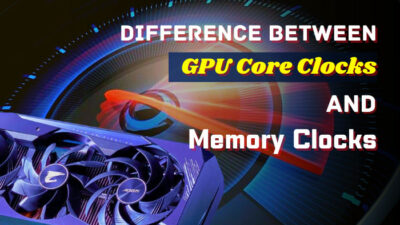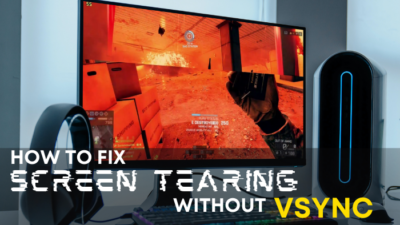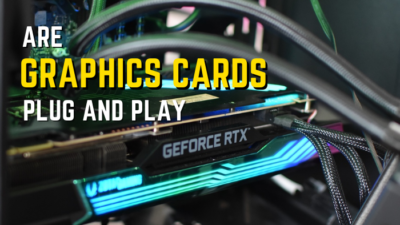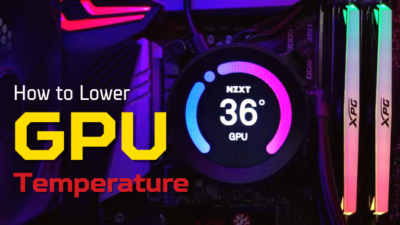The graphics card is one of the main PC parts you think twice about before purchasing. When the manufacturer differentiates the same model number GPU with a suffix, it can get really confusing.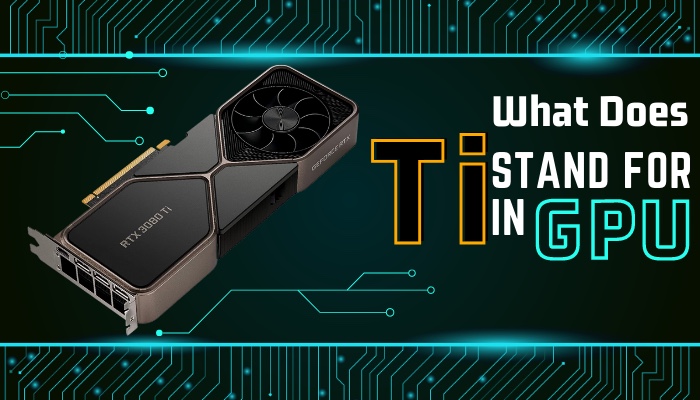
Ti is such a descriptor for the NVIDIA graphics cards that is misinterpreted by many.
In this article, I will narrate the word why Ti is used in GPU, its difference from Super & the counterpart of AMD GPUs for these models. Let’s dive in.
Does Ti Mean Better for GPU?
NVIDIA exclusively uses the suffix Ti for their GPU line-up. The company uses Ti for marketing purposes to differentiate better-performed cards from their non-Ti cards. So, what does Ti stands for & is it a better version?
Ti in NVIDIA graphics cards stands for Titanium. With some added cost, NVIDIA produces the Ti version that is a high performant than their base GPU model, but not quite the performer as the following lineup. So the Ti version stands in the mid of non-Ti & the next model GPU. 
But Ti doesn’t indicate that it’s an overclocked card for the base card. It’s a step-up card from the non-Ti version, including more CUDA cores, more memory with higher speeds, and more power-hungry with boosted performance. It functions as a refreshed version of the base model.
NVIDIA first used Ti for their GeForce2 series back in the year 2000. However, at that time, the Ti was used for model numbers only. In 2011, Ti was initiated as a performance tier label for GeForce GTX 560 Ti.
But how long do GPUs last, so you can stick with a lower-end card or upgrade to the Ti variant? Now, if you wonder what are the advantages of having Ti on a graphics card over a normal GPU, continue reading.
What are the Benefits & Importance of Ti Label in NVIDIA GPU?
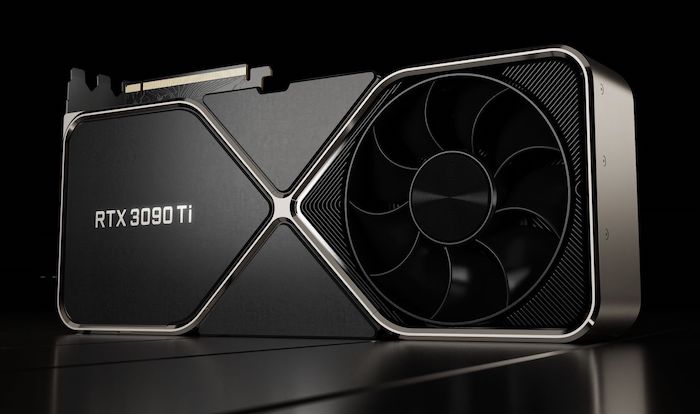 As you already know, the Ti variant graphics card is a high-performance card than its base card, it also comes with some perks.
As you already know, the Ti variant graphics card is a high-performance card than its base card, it also comes with some perks.
Having more memory speed, memory & CUDA cores impact on its prices. But usually, the increased prices also justify the value with an added-on performance. If you are in the fortunate position to spend some extra bucks & prioritize the performance, then the Ti variant is a clear winner.
Here is an RTX 3060 vs. RTX 3060 Ti performance chart with Ryzen 7 5800X and 16GB DDR4-3600. Average frame rates may vary due to game updates, driver updates, or different system configurations.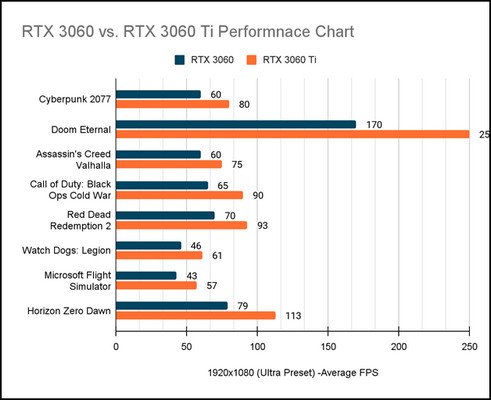
It’s always a win-win situation when you spend a bit more & gain way more. For example, RTX 3060 starts at $329, whereas RTX 3060 Ti’s launch price was $399. Being the premium quality, the 3060 Ti’s main benefit is its performance with the compact design.
For this compact structure, the GPUs are lighter & with this advantage, the laptop’s weights change without sacrificing performance. For high-resolution gaming, a Ti is a great choice without breaking the bank. But ensure the GPU is working properly.
But mind that, this performance uplift varies from model to model. The performance benefit is not that noticeable for RTX 3070 Ti than RTX 3070. However, the RTX 3080Ti has notably boosted performance than its base model.
How Ti Can Confuse Consumers
Titanium is an expensive metal mostly used in expensive sports cars & airplanes due to its lightweight & strength. Additionally, it is also heat-resistance for cooling down, which is a crucial thing in PC components.
So, while buying a Ti card, whether it’s GTX or RTX line-up, don’t think it has titanium included to apart the base card. The suffix is used only for marketing purposes by NVIDIA.
Moreover, many think that Ti means Technical Improvement as it is an upgraded version. Though the specs upgrades for the Ti variant, the abbreviation is not correct. Another misconception is thinking Ti is the TITAN—the most powerful GPU, which is not the case.
Now, there is also a SUPER variant besides Ti. Continue reading to know more about the difference among the GPU variants,
What is the Difference Between NVIDIA Ti vs. Non-Ti vs. SUPER?
Back in 2019, NVIDIA introduced a new variant for their line-up named SUPER. The intent was to combat the AMD 5000 GPU series.
That being said, the SUPER cards perform in between the base & Ti variation cards. For example, it’s like 1660→1660 Super→1660 Ti. That’s why the Ti cards still stay at the top of the line for the same models.
Now, let’s take a moment to explain the differences between these versions.
As already mentioned, the basic difference between Non-Ti, Super, & Ti is performance. The Ti variant is superior to the other two, with a higher price tag. Let’s take a look at the GTX 1660 series specs for a clear understanding.
| Name | GTX 1660 | GTX 1660 Super | GTX 1660 Ti |
|---|---|---|---|
| Base Clock (MHz) | 1530 | 1530 | 1500 |
| Boost Clock (MHz) | 1785 | 1785 | 1770 |
| CUDA Cores | 1408 | 1408 | 1536 |
| TDP (Watts) | 120 | 125 | 120 |
| Memory | 6GB GDDR5 | 6GB GDDR6 | 6GB GDDR5 |
| Memory Speed | 8Gbps | 14Gbps | 12Gbps |
| Memory Bandwidth | 192 GB/s | 336 GB/s | 228 GB/s |
| Memory Interface | 192-bit | 192-bit | 192-bit |
Now, let’s have a look at the performance chart for these GPUs. FPS may vary due to various system configurations.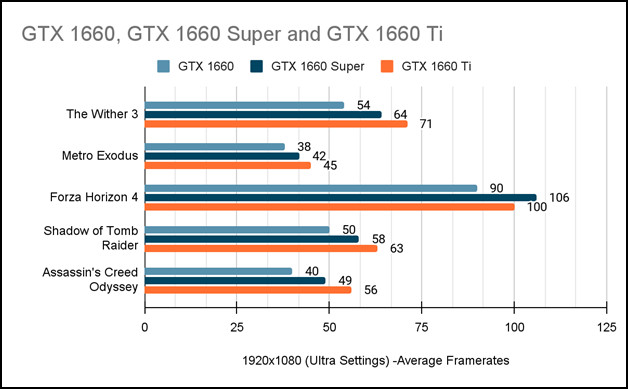
From the chart, you can clearly realize that the GTX 1660 Ti is way better than the base GTX 1660 model. But, you should verify that the graphics card is working as intended because lower GPU usage can induce lower frame rates.
As the Ti is the top tier for a series, RTX 2080 was an exception & has no Ti variant. So the RTX 2070 Super considers the top tier of its kind.
For the RTX 30 series, RTX 3080 had two memory variants—10GB & 12GB. The latter variant was supposed to be the Ti, but as there was already an RTX 3080 Ti (basically RTX 3090), NVIDIA made it complicated for the consumers by releasing so many variants.
NVIDIA made it worsen for the RTX 40 series by following the same method they applied for the RTX 30 series. They wanted to release RTX 4080 with 12GB & 16GB variants which perform very differently, similar to RTX 3080 case. However, due to taking enough criticism, NVIDIA cancelled launching RTX 4080 12GB variant.
What is the AMD Counterpart for NVIDIA’s Ti lineup?
While NVIDIA is dominating the graphics card market, AMD is not far behind. NVIDIA implemented GTX & RTX naming convention with suffixes like Ti, and Super to distinguish the performant cards.
For AMD, the manufacturer uses RX to name their GPU series. Additionally, the company uses XT at the end of their GPU model name to separate the performant cards. For example, 5700 XT, 6600 XT, 7900 XT, etc.
However, AMD released a new variant —XTX, which is used only for 7900 cards based on the latest Navi 31 architecture. So, if you are hunting a Ti equivalent AMD card, then you have to look for the XT variant. But for RX 7000 series, XTX may change the rule.
Follow our guide to fix GPU not detected in BIOS.
FAQs
What does RTX stand for?
RTX—Ray Tracing Texel eXtreme cards have onboard real-time ray tracing technology that simulates the physical behavior of lighting in gaming with the help of DLSS.
What is the difference between RTX & GTX?
The main difference is the first one consists of ray tracing & DLSS. These features help to render more realistic & immersive graphics.
Is RTX 3060 Ti good?
RTX 3060 Ti is a very good GPU & bang for the buck. It’s relatively better than RTX 3060.
Final Thought
Choosing the right graphics card among hundreds of models is puzzling for customers. NVIDIA & AMD use some suffixes in their models to distinguish the competent cards.
NVIDIA uses Ti aka Titanium for the best variant of a model. So, GTX 1660 Ti is the best card for GTX 1660 model. Similarly, the RTX 3060 Ti is better than RTX 3060.
In this article, I describe what Ti stands for & what’s its value in the GPU model name along with its AMD counterpart. Leave a comment for any further queries.

